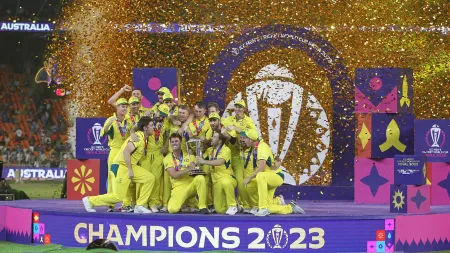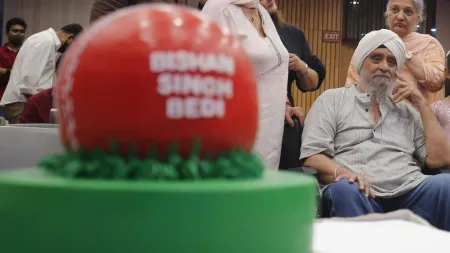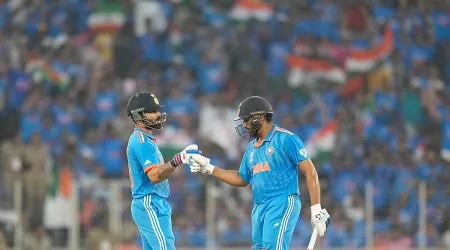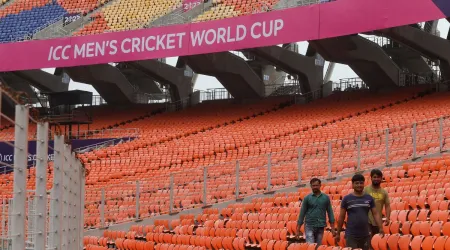- India
- International
150 kmph and counting: How does Pakistan keep producing fast bowlers on an assembly line?
How does Pakistan keep producing fast bowlers on an assembly line? Beef, DNA, Imran are often cited as chief reasons. However, as Mohammad Hasnain’s story shows, it’s down to a nation’s obsession, patience and care
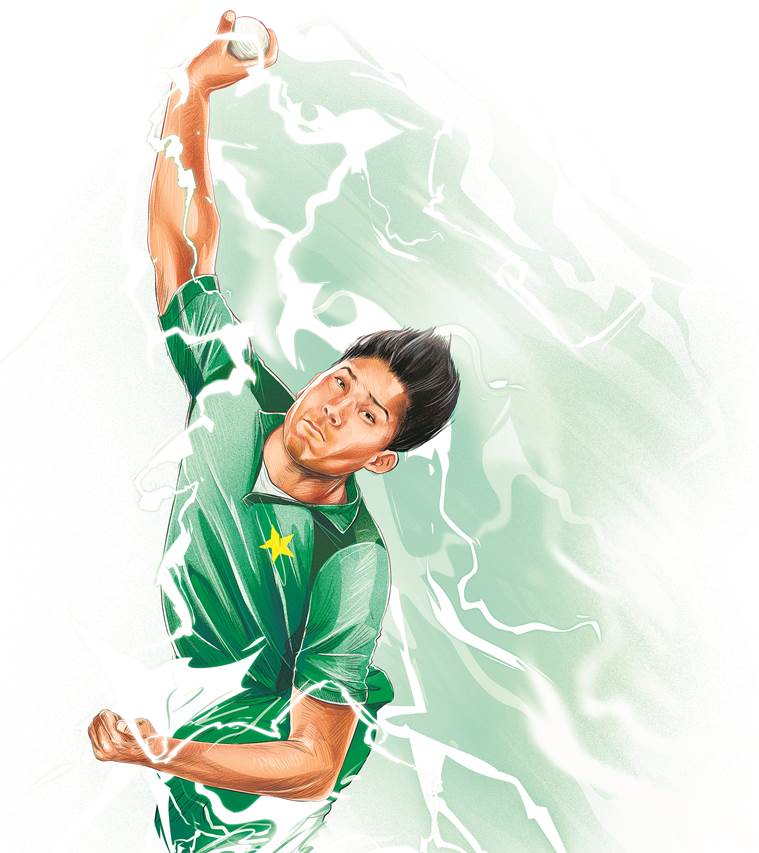 Every team has a player who embodies its key characteristics and central philosophy. For Pakistan, that man is Hasnain. Illustration: Suvajit Dey
Every team has a player who embodies its key characteristics and central philosophy. For Pakistan, that man is Hasnain. Illustration: Suvajit Dey
One evening seven Ramzans ago, Mohammad Hussain, saw a “miracle” that changed his life. Like most streets across Pakistan, the one facing his ‘cattle feed’ shop in Hirabad, Hyderabad, too was gloriously lit for the post-iftaar tape-ball cricket tournament. Once a club cricketer himself, Hussain, now in his late 50s, saw his youngest son Hasnain, 12, join the bunch of excited street cricketers. He had never seen his son play. Hussain’s struggle to raise a family of six had made him turn his back squarely on the game.
ALSO READ | Adrenaline Mush
The father’s interest in the street match grew with each ball his son bowled. The elfish opening bowler would start his spell with a ‘three-wicket’ maiden. Hussain couldn’t believe his eyes. “The batsman couldn’t sight the ball. Three balls missed the stumps. Baki teen bowled maare (The rest were clean-bowled). He was very small but his run-up had rhythm, his action was clean. I was in a state of shock,” says the raconteur par excellence, from his home in Sindh, Pakistan.
Not missing any detail, Hussain recalls how he stepped out of his shop and walked over to his son. “I asked him, ‘Beta, did anybody teach you how to bowl?’ There are many old cricketers in Hirabad, I thought, someone would have given him tips. He answered innocently, ‘No Abbu, this is how I have always bowled’.”
His son’s answer took Hussain back to his playing days and that sagely maxim he had often heard on Pakistan’s always-vibrant club scene. “They say, fast bowlers can’t be made, they are born. You can change a bit of run-up, a bit of action, that’s all. Speed kudrati hoti hai (Speed is natural).” Hussain knew his son was ‘special’. As a father, and a one-time cricketer in Pakistan, it was his duty to nurture him. From that day, cricket made a comeback into his life. Hussain was hooked again.
It’s this ‘speed gift’ that has fast-tracked Hasnain to the top echelons of cricket. He was a club cricketer at 12, a Pakistan Under-19 player at 17, a Pakistan Super League pacer at 18 and now a World Cupper at 19. The big break into the squad of 15 for England was on the back of the much-publicised 151 kph thunderbolt he bowled for Quetta Gladiators in the PSL this March.

Pakistan, historically, has a weakness for speed demons. They make them jump the queue, put them on a pedestal. They even vote them into the Prime Minister’s office. In Pakistan, you never walk alone if you can bowl fast. Hasnain missed the U-19 World Cup due to injury but the Pakistan Cricket Board (PCB) didn’t abandon him.
 Mohammad Hasnain at the 2019 World Cup. (Express Photo)
Mohammad Hasnain at the 2019 World Cup. (Express Photo)
Enter Mudassar Nazar, the former Pakistan all-rounder, now in charge of the PCB Academy, aka the Pakistan Pace Factory. A respected junior coach, Mudassar’s professorial tone and economy of words make him the perfect mentor for adrenaline-charged boys with 150-kph dreams. He ensured Hasnain didn’t rush his rehabilitation. Hussain is indebted to the system that supported his son. “The PCB spent close to Rs 25 lakh on Hasnain. They paid his medical bills, they would often fly him down to his home, they even hired a trainer to travel with him,” he says.
Mudassar sees this as a wise investment in a valuable asset. “He bowls quick. No coach can give you pace. All a coach can do is tinker with your action, make you strong, but they need to have the will to bowl fast. You are born with that,” he says.
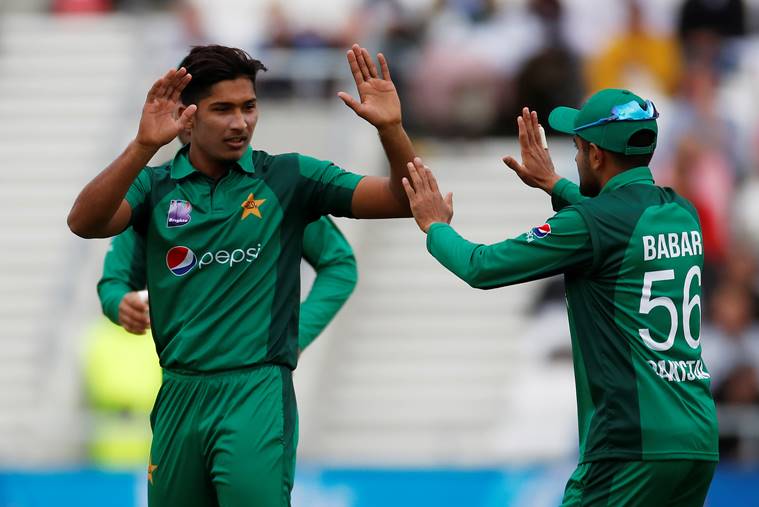 Mohammad Hasnain made his Pakistan ODI debut against Australia in March. (Source: Reuters)
Mohammad Hasnain made his Pakistan ODI debut against Australia in March. (Source: Reuters)
While he was injured, Hasnain would meet another of his benefactors, who like Mudassar values the virtue of pace. Pakistan’s leading industrialist and Quetta Gladiators owner Nadeem Omar, 62, still loves wearing his flannels and is a regular on veterans’ tours. A sports philanthropist and cricket romantic, Omar signed up Hasnain even when he wasn’t fully fit. “Our scouts went to a tournament, Hasnain was injured at that time. He had already played for Pakistan U-19 and we had heard about his pace. So we signed him. Gradually, he got stronger. He got Man-of-the-Match awards, he bowled that 150 kph ball. He is quick,” Omar says. Once again, it’s the speed they all talk about.
It’s been close to a month since his son made the World Cup cut. Hussain, by now, has got used to media queries. Still, the interest from across the border surprises him. Not well travelled, but the father is worldly wise. He is a confident man, unfazed by the sudden spotlight. He talks about the weather, his family’s roots in Alwar, Rajasthan, and his business.
“We’ve this kuttar wali machine,” he says. “Woh makai aur baajre ka jo ghaas hota hai, this machine cuts it, so that it can be fed to cows, buffaloes and goats. Hasnain was the youngest, we didn’t force him to be at the shop. It’s only during Bakra Id, days before the kurbani, when there’s a rush to buy cattle feed, that he used to come over and help.”
For the rest of the time, Hasnain, about eight years old then, would sit in front of the television and marvel at the pacers in Pakistan colours.
One evening at home, the father asked his son: “Why is it that whenever I come home you are watching cricket?” Hussain recalls the rest of the conversation. “He pointed to the pacers on the screen. Don’t remember if it was Waqar, Sami or Shoaib Akhtar. He said I want to bowl like them.”
The one-time wicketkeeper, who switched to pace bowling after an injury, told his son that the path he was dreaming to take wasn’t easy. “I told him, Allah ne ek hi Waqar banaya hai, ek hi Wasim banaya hai, ek hi Akhtar banaya hai. You can’t be them. Pace bowling is hard work. Woh upar waale ki den hoti hai.”
After that talk, Hussain thought he had reasonably de-romanticised pace bowling for his son. He couldn’t be more wrong. Hasnain continued to stare at his heroes on the screen and kept pestering his father to take him to the cricket club near their home. Hussain kept delaying the club visit, he had other worries in life.
That was until he saw his son bowl. On that Ramzan evening of 2012, under the glow of halogen bulbs, Hussain saw the light. The next morning, the father took the son to his old club. Hussain’s one-time team-mates were coaches now. They asked the 12-year-old to bowl. Within minutes, the seasoned pros gathered around Hussain with quizzical looks on their faces. “They asked me, ‘Where has your son been training before this?’ I said, ‘Nowhere’.
They couldn’t believe what they were seeing. In front of them was a natural pacer with raw pace,” says the proud father.
From that day, the two, father and son, were inseparable. The elder sons would now man the kuttar wali machine as the father got busy with the pace prodigy. Hussain gets emotional when he talks about the sacrifices the family made to groom Hasnain. “My two elder sons and my daughter, they knew the family’s youngest needed to be the strongest too. Apne bhag ka dudh ise pila dete the.”
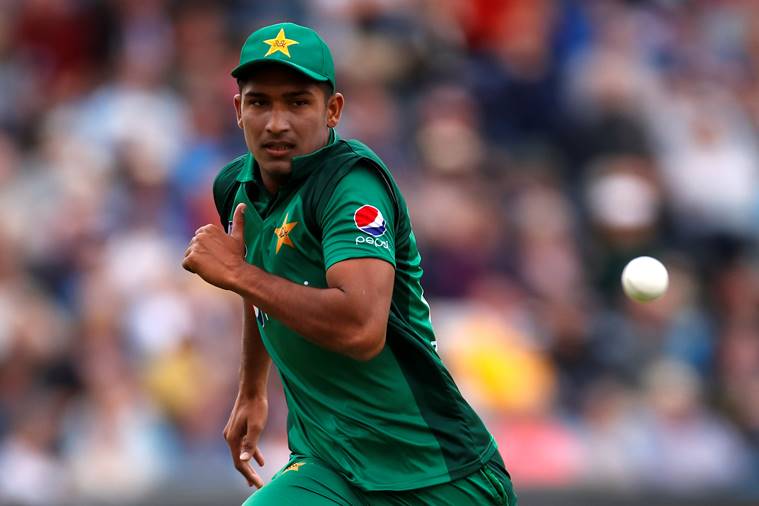 Mohammad Hasnain has played six international matches in young career. (Source: Reuters)
Mohammad Hasnain has played six international matches in young career. (Source: Reuters)
Hasnain certainly needed the extra milk. Hussain’s training schedule was unforgiving. “We would start the day with a 8-km run at Qasim Park. Later in the afternoon, we would be at the stadium at around 2 pm. I would carry three of his extra T-shirts with me,” he says.
Hussain has a way with words and an eye for detail. He paints a graphic picture of Hasnain’s peak summer afternoon training session at Hyderabad’s Niaz Stadium. “The temperature would be around 46 to 47 degrees. Dopahar ke do baje, chamakti dhoop ke neeche, woh 5 round lagata tha. This would be followed by sprints. When he would take off his shirt, I would have to rinse it. The sweat from the shirt would drip like it was soaked in water overnight. He would change before his next routine — 10 overs of target bowling. And finally, he would wear the third shirt before he bowled 10 overs to the various batsmen at the nets. By the time we would be walking out of the ground exhausted, we would hear the azaan for the maghrib namaz,” he says, the strain in his voice conveying the hardship his son had to go through to cross the 150kph barrier.
Fast bowling wasn’t only about crowds cheering during the long run-up, fans swooning over those long flowing tresses, stumps flying; on most days it was about three drenched T-shirts and half a bucket of sweat.
Mudassar has had three stints at the NCA, Lahore, and has virtually groomed every bowler that has raised Pakistan’s pace speedometer to a new high. From Shoaib Akhtar to Mohammad Amir to Hasnain, the 63-year-old has seen them all. He likes talking about the daredevils with high pain thresholds and short shelf life. “It hurts the body when you are hurling a ball at 90mph. If you don’t have the will, you can’t do it. Only a few have that will. It is not easy to be a fast bowler. But at the same time, when they shatter the stumps and they go flying… well,” he tails off as he fumbles for words to express cricket’s most intoxicating sight.
Mudassar, on whom the great Imran Khan banked for strategic inputs, says he still gets goose pimples when he sees a freshman with cannonball pace. Such is the pull of his workplace that he is here seven days a week. “Some times I am here even when I don’t need to be. Even if there’s no one at the academy I come here,” says the coach manning Pakistan’s most productive assembly line.
He calls Hasnain a work in progress, someone who can bowl even faster. In Pakistan, the process to bowling fast is a life-long pursuit. “He needs to sort out his run-up since he is losing his rhythm. His strides are pretty lengthy. Waqar had the same problem at an early age. He changed and got quicker. A bit of tinkering with his run-up and who knows,” he says.
Mudassar goes on to talk about the other “four to five pacers” he trains at the NCA who all happen to be below 18 but can bowl close to 90mph. “We have quite a battery at the moment. We aren’t strong in batting but pacers are coming through. There is Nasim Khan, there’s Muhammad Musa … there are many.”
A Youtube search throws up several videos of the two. Nasim, not yet 18, is a wiry boy with a complicated release and a deadly short ball. They are calling him Pakistan’s Bumrah. There seem to be more videos of him injuring batsmen than taking wickets. There is one where a batsman is slowly back-tracking towards the square-leg umpire, even before Nasim lets the ball go. The mean young pacer is not just generating pace, but fear too. Musa is more conventional. He bowls the off-stump line, reverses and, of course, regularly touches 90 mph.
Mudassar also mentions a boy that PSL franchise Lahore Qalandars signed last year. He had no hardball experience but touched 150 kph during the PSL. That bowler is Haris Rauf, a Rawalpindi boy.
His is a charming story. Haris was a legend on Pakistan’s popular tape-ball circuit — cricket’s street version played with a tennis ball wrapped in electric tape. For a price, he could be hired by teams entering those thousands of big money flood-light tournaments played across Pakistan round the year. Ramzan is when the stakes go higher. Haris had his own sponsor too.
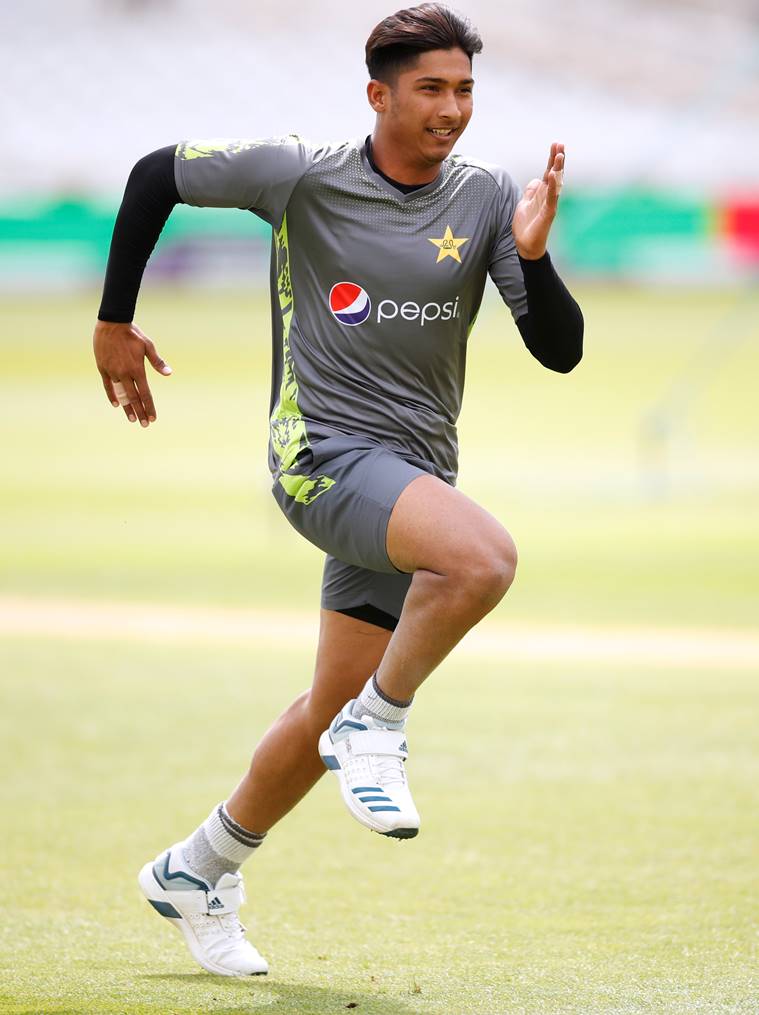 Mohammad Hasnain plays for Quetta Gladiators in the PSL. (Source: Reuters)
Mohammad Hasnain plays for Quetta Gladiators in the PSL. (Source: Reuters)
The story goes that Haris, on a lark, decided to accompany his friend for the Rawalpindi to Gujranwala road trip to be at the Qalandars trials. After the close-to four-hour drive, they reached the venue to find the stadium’s main gates shut. With close to 20,000 aspirants already registering, the Qalandars talent scouts, headed by former Pakistan pacer Aaqib Javed, didn’t want more.
Haris and his friend weren’t going back home. They broke open a back door and joined the queue. There is a long video on Youtube in which Haris is narrating his trial story: “During lunch time, they gave everybody chhole chawal; me and my friend didn’t have them. I told him you can’t bowl fast after chhole, it bloats your stomach. I bowled 92 mph and was picked by Aaqib bhai.” It takes more than just steely resolve for a Pindi boy to say no to chhole.
The Qalandars’ website says they have screened 1,13,000 — mostly tape-ball bowlers — in search of pacers with raw pace. The tape-ball circuit is Pakistan’s unorganised sector that supports the organic growth of the hot ‘pace jocks’. Quetta owner Nadeem says that on the tape-ball circuit, you are nothing if you can’t bowl fast. “Every street, every mohalla, there is tape-ball cricket. Us game mein aapki pehchan hi fast bowling hai,” he says. Bowling with the soft tennis ball strengthens your shoulders, makes you think of new ways to dismiss batsmen, forces you to be street-smart.
While Hasnain’s father asked him to stay away from tape-ball cricket, for Haris that was the only game he played till he reached the Qalandars trials. However, their paths would eventually meet. In a nutshell, if you have it in you to bowl fast, it doesn’t matter which ball you bowl with, you are likely to get spotted.
For years, the world has wondered how Pakistan always has a rich reserve of teenaged fast bowlers. Beef, DNA and Imran are often quoted as reasons. However, the journeys of Hasnain and Haris offer better answers.
Pakistan might yet not have a robust system to groom pacers, but it has a culture that ensures that the young speedsters don’t fade away before they wear the Greens. When a teenager runs in fast and gives it his all, fathers stand up and take notice, coaches put them in cotton wool, and patrons don’t think twice before handing them hefty cheques. It takes a village to raise a child. And it takes a speed-obsessed nation to raise 150 kph pacers.
Get latest updates on IPL 2024 from IPL Points Table to Teams, Schedule, Most Runs and Most Wickets along with live score updates for all matches. Also get Sports news and more cricket updates.


















